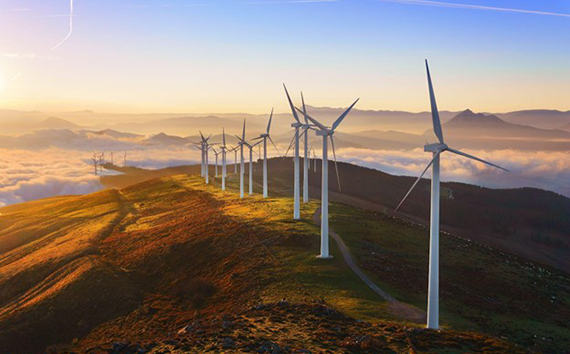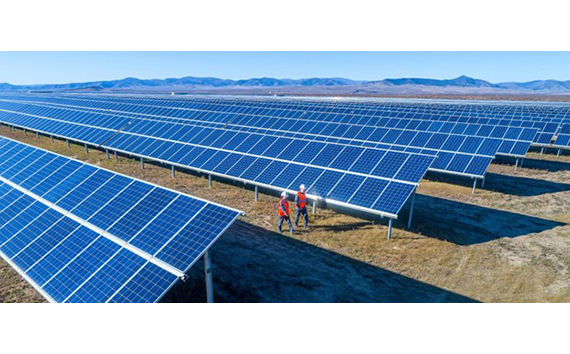It’s no secret that carbon and other greenhouse gas emissions have led to global warming and climate change. And if we don’t do something about it soon, it will only worsen. This is precisely why organizations and individuals worldwide are doing everything possible to reduce their carbon footprints. Whether it’s an individual getting rid of a car that runs on fossil fuel in favor of an electric vehicle or an organization installing a large solar farm to power their building, many changes are already in play.
When it comes to reducing emissions, there’s a limit on how much companies and people can do. Between budgetary constraints and the limits of available technology, no one can eliminate all their emissions. Instead, these companies and individuals turn to carbon offset markets to purchase carbon credits that cover their remaining emissions.
With so many people and organizations in the world, you may be wondering about the overall size of the carbon offset market and what its future size may be. Below, we outline the current size of the carbon offset markets and speak to their future growth. We also give some other helpful information on carbon credits and the markets that sell them.
What Is the Market for Carbon Offsets?
The carbon offset market is divided into two categories, the voluntary carbon market (VCM) and the compliance carbon market. While these two emissions trading systems are similar in many ways, they have critical differences too.
The voluntary carbon offset market is where organizations can create carbon credits called verified emission reductions (VERs) by voluntarily reducing their own greenhouse gas emissions (GHG emissions), and other organizations can reduce their excess carbon emissions or other equivalent GHG emissions by purchasing VERs. Organizations can create these offsets through various emissions reductions, such as preventing deforestation, supporting reforestation efforts, upgrading their factories, switching to renewable energy, carbon capture, installing low-carbon manufacturing methods, and more.
The compliance market — also known as the cap-and-trade market — is where a local or national government allows organizations a certain cap on their GHG emissions. If the organization emits less than its cap, it creates a carbon credit the company can sell. Companies that exceed their emissions cap must purchase these credits on the compliance market to remain in line with the law.
For example, suppose the federal government gives car manufacturers a GHG emissions cap of 100 metric tons, and a company emits only 50 metric tons after taking climate action to reduce its emissions. In that case, that company has created 50 metric tons of carbon credits it can sell. However, suppose another auto manufacturer emits 150 metric tons of GHG. In that case, it must purchase 50 metric tons of carbon credits on the compliance market to reduce its carbon footprint or face discipline from the authorities.

How Many Carbon Credit Markets Are There?
As we mentioned above, two carbon markets exist: the voluntary carbon market and the compliance carbon market. On the compliance market side of things, there are 30 markets around the world. The European Union (EU) was the trailblazer in creating these cap-and-trade markets, as its first emissions trading scheme launched way back in 2005.
As for VCMs, no one is tracking the number of these markets worldwide. The same goes for the third-party nonprofit organizations verifying the legitimacy of VERs and their related offset projects, such as:
- The Gold Standard
- Climate Action Reserve
- American Carbon Registry
- Verra
- CDM
- SCS Global Services
- Green-e Climate Standard
In some cases, organizations bypass these VCMs altogether and directly offer their VERs for sale on the open market.
How Big Is the Voluntary Carbon Offset Market?

 source
source
In 2021, the VCM had reached a market value of $2 billion. Experts anticipate continued growth as new climate regulations, agreements, and treaties, such as the existing Paris Agreement and Kyoto Protocol, continue rolling out. By 2030, they expect the VCM to have a market value of $10 billion to $40 billion.In 2021, the VCM had reached a market value of about $2 billion. Experts anticipate continued growth as new climate regulations, agreements, and treaties, such as the existing Paris Agreement and Kyoto Protocol, continue rolling out. By 2030, they expect the VCM to have a market value of $10 billion to $40 billion.
What Is the Size of the Global Compliance Carbon Market?
The compliance carbon market makes up the majority of the value in carbon credits. As of 2021, it had a market value of $851 billion, a 164% increase from 2020. And the market growth is expected to continue as carbon pricing increases due to increased demand to meet government regulations.
It’s important to note that the European Union Emissions Trading System (EU ETS) made up 90% of the global market in 2021. The U.S. has no official federal cap-and-trade system. Only the state of California has a cap-and-trade carbon trading market.
Why Are Carbon Markets So Important?
Carbon markets have grown to become hundreds or billions of dollars in market size because of climate change and the importance of slowing global warming by getting organizations and individuals as close as possible to being net-zero GHG emitters.
Becoming carbon neutral doesn’t mean you produce no amount of carbon emissions. It means you’ve started by reducing your carbon emissions as much as possible through sustainability, reducing fossil fuel dependence, and other climate actions. Once you’ve reached that point, getting to or near net-zero emissions requires purchasing credits on these carbon markets.
Whether on the voluntary or compliance markets, this is the only way some organizations and individuals can reach their net-zero targets. This is why these markers are so important to our environment.
For example, a coal-fired power plant can only reduce its GHG emissions to a point. The remaining tons of carbon dioxide can’t be taken away due to budgetary or scientific limitations. However, this power plant has committed to a series of net-zero targets and doesn’t want to fall behind. So, the power plant can head to a voluntary carbon market and purchase carbon credits from one of the market’s many projects. Those credits offset the remaining CO2 emissions, allowing the power plant to remain on its net-zero pathway.
Carbon Reduction Projects on VCMs

VCMs may seem like a solid option for you and your organization, but do VCM projects align with your brand? Fortunately, there are a wide range of projects to choose from. These can include but aren’t limited to:
- Renewable energy: Organizations are making big changes from fossil fuel power to renewable energy sources like hydroelectric, solar, and wind. Sometimes, these organizations need funding to support these big changes, and purchasing credits from these projects can help spur them along.
- Blue carbon: Blue carbon is carbon emissions sequestered or absorbed by the world’s ocean and coastal ecosystems via mangroves, sea grasses, salt marshes, and other vegetation. Blue carbon credits are often some of the priciest carbon credits because they involve significant work, but they are among the most innovative, too.
- Forestry: Trees absorb CO2 emissions from the air and use them to help produce nutrients to live and grow on. The more trees we have, the more carbon gets absorbed. Organizations can launch reforestation projects that involve planting trees or projects to prevent deforestation through sustainable development practices. Purchasing credits for this type of project helps to fund the tree-planting process or sustainable building process.
- GHG emission reductions: Other projects are just simple GHG emission-reduction efforts. These include installing new carbon-absorbing technology in a factory or adjusting a supply chain to only use logistics companies that employ electric vehicles. Organizations making these huge changes need funds to do so, which they raise when their carbon credits are purchased.
- Methane capture: Landfills emit lots of methane gas, which is a greenhouse gas and impacts the environment. To help mitigate this, some landfills have started installing methane-capturing systems that store the methane gas for more eco-friendly uses or dispose of it in less harmful ways.
These are only a fraction of the options on the VCM. With so many options available, you will surely find the perfect project you and your organization would be proud to support. So, you’re not only doing a good thing for the environment and supporting another organization’s green initiatives, but you’re also supporting a cause that aligns with your values and brand.

Terrapass Has Carbon Credit Options for You and Your Organization

The voluntary and compliance carbon markets are massive, as the voluntary market is worth $2 billion, and the compliance market is worth a whopping $851 billion across only 30 markets worldwide. And this is only a drop in the bucket when you consider their anticipated growth. The voluntary market alone is expected to grow up to $10 billion to $40 billion by 2030.
And as government regulations and climate pacts and treaties continue to aim at stopping climate change, we’ll only see carbon credits become a larger part of the corporate world.
You can get in on carbon credit from exciting emission-reduction projects now at Terrapass. We have a wide range of carbon credit options for businesses and individuals, ranging from airline flight emission offsets to customized business solutions. Check out how Terrapass can help you meet your GHG emission goals.
Brought to you by terrapass.com
Featured image:
- SEO Powered Content & PR Distribution. Get Amplified Today.
- EVM Finance. Unified Interface for Decentralized Finance. Access Here.
- Quantum Media Group. IR/PR Amplified. Access Here.
- PlatoAiStream. Web3 Data Intelligence. Knowledge Amplified. Access Here.
- Source: https://terrapass.com/blog/overall-size-of-carbon-offset-markets/
- :has
- :is
- :not
- :where
- $UP
- 100
- 200
- 2005
- 2020
- 2021
- 2030
- 30
- 50
- 90
- a
- About
- about IT
- above
- across
- Adobe
- After
- Agreement
- agreements
- aim
- AIR
- airline
- align
- Aligns
- All
- Allowing
- allows
- alone
- along
- already
- also
- altogether
- among
- an
- and
- Another
- anticipate
- Anticipated
- ARE
- around
- AS
- At
- Authorities
- auto
- available
- away
- back
- BE
- because
- become
- behind
- being
- below
- between
- Big
- Billion
- billions
- brand
- Building
- business
- businesses
- but
- by
- called
- CAN
- Can Get
- cap
- capture
- car
- carbon
- carbon footprint
- Carbon Offsets
- Carbon Reduction
- case
- cases
- categories
- Cause
- certain
- Chance
- Changes
- Choose
- Climate
- Close
- co2
- co2 emissions
- COM
- comes
- committed
- Companies
- company
- compliance
- Consider
- constraints
- continue
- continued
- Corporate
- cover
- create
- created
- creates
- Creating
- credit
- Credits
- critical
- Current
- customized
- Demand
- dependence
- Development
- differences
- directly
- dispose
- divided
- do
- Doesn’t
- doing
- dollars
- Dont
- Drop
- due
- Eco-friendly
- efforts
- Electric
- electric vehicle
- electric vehicles
- eliminate
- emission
- Emissions
- energy
- Environment
- Equivalent
- EU
- European
- european union
- European Union (EU)
- everything
- example
- exceed
- excess
- exciting
- exist
- existing
- expect
- expected
- experts
- Face
- factories
- factory
- Fall
- farm
- favor
- Federal
- Federal government
- Find
- First
- flight
- Footprint
- For
- Fortunately
- fraction
- from
- fund
- funding
- funds
- future
- future growth
- GAS
- get
- getting
- Give
- gives
- Global
- Goals
- Goes
- Gold
- good
- Government
- Green
- greenhouse gas
- Grow
- grown
- Growth
- had
- harmful
- Have
- head
- help
- helpful
- helps
- How
- However
- HTML
- HTTPS
- huge
- Hundreds
- if
- image
- Impacts
- importance
- important
- in
- include
- Increase
- increased
- Increases
- individual
- individuals
- information
- initiatives
- innovative
- installing
- instead
- into
- involve
- IT
- ITS
- jpg
- just
- known
- Kyoto Protocol
- large
- larger
- Late
- launch
- launched
- Law
- LEARN
- Led
- legitimacy
- less
- like
- LIMIT
- limitations
- Limited
- limits
- Line
- live
- local
- logistics
- made
- Majority
- MAKES
- Making
- Manufacturer
- Manufacturers
- manufacturing
- many
- many people
- Market
- market value
- Markets
- massive
- max-width
- May..
- mean
- means
- Meet
- mentioned
- methods
- Mitigate
- more
- most
- MSCI
- much
- must
- National
- Near
- Need
- never
- New
- no
- Nonprofit
- Nonprofit Organizations
- now
- number
- ocean
- of
- offer
- official
- offset
- offsets
- often
- on
- once
- ONE
- only
- open
- Option
- Options
- or
- organization
- organizations
- Other
- our
- out
- outline
- overall
- own
- panels
- paris
- Paris Agreement
- part
- pathway
- People
- perfect
- Planting
- planting trees
- plato
- Plato Data Intelligence
- PlatoData
- Play
- Point
- possible
- power
- practices
- precisely
- prevent
- preventing
- process
- produce
- project
- projects
- protocol
- proud
- purchase
- purchased
- purchasing
- purchasing Credits
- raise
- range
- ranging
- reach
- reached
- reduce
- reducing
- reducing emissions
- reduction
- regulations
- related
- remain
- remaining
- Renewable
- renewable energy
- requires
- Reuters
- Rid
- Rolling
- s
- sale
- salt
- same
- scientific
- SEA
- Secret
- see
- seem
- sell
- Series
- showing
- side
- significant
- similar
- Simple
- Size
- Slowing
- So
- solar
- solar panels
- solid
- Solutions
- some
- something
- Soon
- Sources
- speak
- started
- State
- stopping
- store
- such
- support
- Supporting
- surely
- sustainable
- Sustainable Development
- system
- taken
- taking
- Technology
- than
- that
- The
- the Law
- The State
- the world
- their
- Them
- There.
- These
- they
- thing
- things
- third-party
- this
- those
- Through
- to
- too
- Tracking
- Trading
- tree
- Trees
- TURN
- two
- type
- u.s.
- union
- use
- uses
- value
- Values
- various
- vehicle
- Vehicles
- verifying
- via
- voluntarily
- voluntary
- want
- was
- Way..
- ways
- we
- What
- when
- whether
- which
- while
- why
- wide
- Wide range
- will
- wind
- windmills
- with
- wondering
- Work
- world
- worldwide
- worsen
- worth
- would
- you
- Your
- zephyrnet












